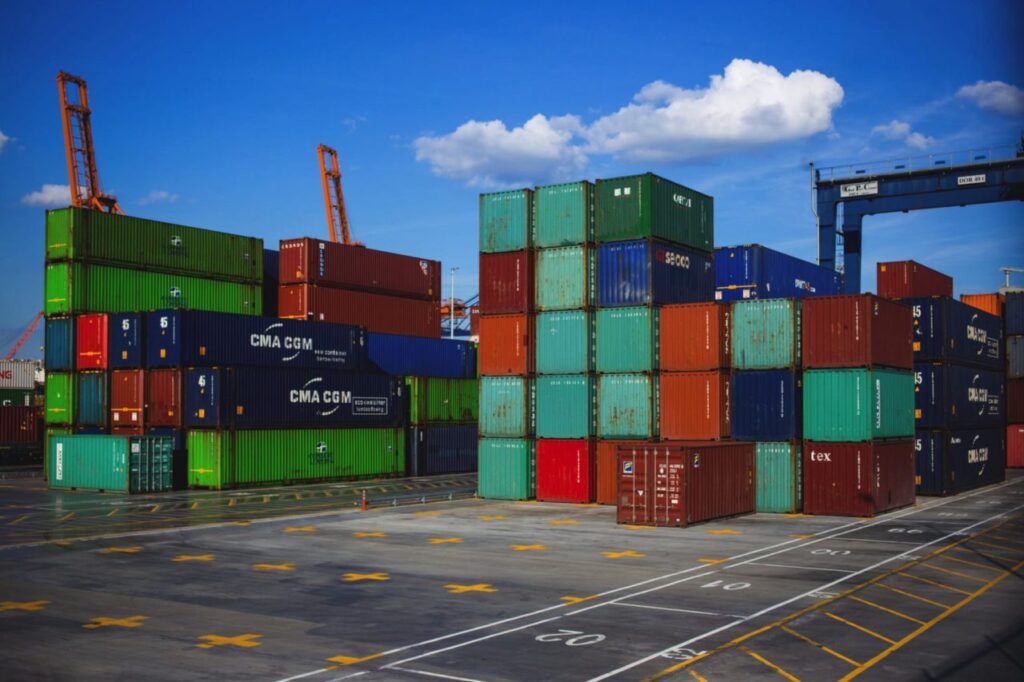Not all storage is created equal, and using the wrong type could cost you more than just data. Imagine relying on a consumer-grade external drive to store business-critical files, only to have it fail under pressure. The result? Downtime, lost productivity, and potential reputational damage.
Whether you’re managing a growing startup, a small IT environment, or enterprise-grade infrastructure, understanding the difference between consumer and enterprise storage isn’t just technical trivia—it’s a business decision. Each is designed with different goals in mind: consumer storage emphasizes affordability and convenience, while enterprise systems prioritize reliability, performance, and resilience.
In this article, we’ll break down the critical differences between enterprise and consumer storage solutions, outline when to use each, and help you make informed decisions that protect your data and support your long-term IT strategy.
What Is Consumer-Grade Storage?
Consumer-grade storage is designed for everyday use—think home offices, student laptops, media collections, and casual backups. These devices are built for affordability, ease of use, and availability through retail channels. You’ll find them in big-box stores, online marketplaces, and bundled with consumer electronics.
Typical examples of consumer storage include:
- External USB hard drives (e.g., WD My Passport, Seagate Expansion)
- SATA SSDs used in desktops and laptops
- Flash drives and SD cards
- Entry-level NAS units for home use
While perfectly suitable for non-critical workloads, consumer storage is not designed for sustained heavy usage. These devices often have:
- Lower endurance and write cycles
- Basic or no error correction
- Limited or no redundancy
- Warranties ranging from 1 to 2 years
- Minimal vendor support
They’re great for storing vacation photos or backing up a personal computer—but not for running business applications, hosting virtual machines, or handling 24/7 workloads.
In short, consumer storage is budget-friendly and convenient, but it’s not built to withstand the demands of business-critical operations. For that, you’ll need a more robust solution, which we’ll explore next.
What Is Enterprise-Grade Storage?
Enterprise-grade storage is purpose-built for environments where data integrity, uptime, and performance are non-negotiable. These systems are used in data centers, server rooms, and corporate IT environments where downtime can translate directly into lost revenue or compliance risk.
Unlike consumer storage, enterprise systems are engineered to support:
- 24/7/365 operation
- High-performance workloads such as databases, virtualization, video editing, and analytics
- Redundancy features like RAID, dual power supplies, and hot-swappable drives
- Advanced error detection and correction (e.g., ECC memory, SMART diagnostics, TLER)
Enterprise storage comes in a variety of form factors:
- Rackmount NAS and SAN systems from vendors like NetApp, Dell EMC, or HPE
- High-end SSDs (e.g., U.2 NVMe, SAS SSDs with power-loss protection)
- Modular storage arrays designed for multi-petabyte scale
- All-flash arrays for low-latency, high-throughput environments
These systems also offer:
- Longer warranties (often 3–7 years)
- Faster support SLAs
- Firmware validation and vendor-certified components
- Firmware update support that doesn’t require downtime
While the cost per GB is significantly higher, the total cost of ownership (TCO) is often lower in mission-critical environments due to improved uptime, reduced risk, and better performance over time.
If your business depends on continuous access to data—and especially if you’re running production workloads—enterprise storage isn’t a luxury. It’s a necessity.
Key Differences Between Enterprise and Consumer Storage
Although consumer and enterprise storage may look similar on the surface—often using the same physical connectors or drive interfaces—their internal design, performance capabilities, and reliability standards are worlds apart.
Here’s a side-by-side comparison to highlight the most important distinctions:
| Feature | Consumer Storage | Enterprise Storage |
|---|---|---|
| Reliability | Designed for light, intermittent use | Built for 24/7 operation with rigorous fault tolerance |
| Performance | Moderate speeds, optimized for general tasks | High IOPS, sustained throughput for demanding workloads |
| Uptime Expectations | Occasional usage, not optimized for high availability | Expected to run continuously without failure |
| Error Handling | Basic or none | Advanced (ECC memory, TLER, SMART monitoring) |
| Redundancy Options | Rare or external (if any) | Built-in RAID, hot-swappable drives, dual controllers |
| Warranty & Support | 1–2 years, often limited support | 3–7 years with 24/7 enterprise-grade support |
| Cost per GB | Lower | Higher upfront, but better TCO in business environments |
| MTBF (Mean Time Between Failures) | Lower (around 1 million hours) | Significantly higher (2–2.5 million hours or more) |
- Consumer drives focus on keeping costs low and are best for personal backups, media storage, or non-critical tasks.
- Enterprise storage focuses on resilience, speed, and stability—ideal for production databases, virtual environments, and systems that can’t afford downtime.
By understanding these differences, you can make informed decisions that align your storage infrastructure with the demands of your workload and business risk tolerance.
When to Use Each Type
Choosing between consumer and enterprise storage isn’t just about budget—it’s about aligning the right tool with the job. Each type has its place, depending on the workload, uptime requirements, and the potential cost of failure.
Use Consumer Storage When:
- You’re backing up non-critical personal files
- You need affordable bulk storage for media or archives
- The environment has light or infrequent usage (e.g., home office or student workstation)
- You’re building a test lab or short-term project environment with minimal performance needs
Use Enterprise Storage When:
- You’re running business-critical workloads (e.g., databases, ERP systems, customer portals)
- High availability, data integrity, and performance are essential
- You’re in a virtualized environment with multiple VMs sharing storage
- You require support contracts, advanced monitoring, and vendor-backed SLAs
- The cost of downtime outweighs the savings from using cheaper hardware
Hybrid or Prosumer Use Cases:
Some small businesses may benefit from a hybrid approach, using prosumer NAS devices with RAID configurations and consumer-grade drives for non-critical storage, while reserving enterprise-grade storage for applications where uptime and performance are essential.
The key is to match the storage solution to the risk level of the application it supports. A few dollars saved on hardware often pale in comparison to the cost of data loss or business disruption.
Risks of Using Consumer Storage in Business Environments
While consumer storage might seem like a budget-friendly option, using it in business-critical environments can introduce hidden risks that often cost more in the long run than investing in proper enterprise-grade solutions.
Higher Failure Rates Under Continuous Workloads
Consumer drives aren’t designed for 24/7 operation. Prolonged usage in high-demand environments can cause them to overheat, degrade faster, or fail without warning, putting valuable business data at risk.
Lack of Redundancy and Hot-Swap Features
Most consumer storage devices don’t support features like RAID redundancy, dual controllers, or hot-swappable drives. When a failure occurs, downtime is unavoidable, and data recovery becomes more complicated or even impossible.
Limited Monitoring and Predictive Failure Tools
Enterprise storage includes SMART diagnostics, error logging, and predictive failure analysis. Consumer-grade devices typically lack these tools, meaning failures can strike without any warning signs.
Weak or Nonexistent Support
In a business context, time is money. When a consumer’s drive fails, support often means waiting days (or weeks) for a replacement—if support is available at all. Enterprise vendors offer 24/7 support, fast replacements, and expert help during critical incidents.
Downtime Costs Can Exceed Hardware Savings
The biggest risk? The false economy. Saving $300 on a drive could lead to thousands of dollars in downtime, lost productivity, or lost clients. For many businesses, these indirect costs quickly eclipse the upfront savings from using cheaper hardware.
Bottom line: If your business relies on the data stored in a system, then it also depends on that system’s ability to stay online, recover quickly, and protect against failure. Consumer-grade storage isn’t built to meet those expectations.
Tips for Choosing the Right Storage Solution
Choosing between consumer and enterprise storage shouldn’t be based on cost alone. Instead, it should be grounded in the needs of your workload, risk tolerance, and long-term business goals. Here are some key factors to evaluate:
Assess Performance Requirements
Do your applications need high input/output operations per second (IOPS)? Are you working with large files or databases that require sustained throughput? Enterprise-grade SSDs and storage arrays are specifically optimized for performance under load.
Consider Redundancy and Recovery
Ask yourself: What happens if this drive fails? Enterprise systems offer RAID configurations, hot-spare drives, and controller redundancy, allowing for seamless failover. Consumer solutions often rely on a single point of failure.
Evaluate Warranty and Support Terms
Check the warranty length and support SLA. Consumer drives may come with 1–2 years of basic warranty and minimal customer support. In contrast, enterprise vendors offer 3–7 years of coverage, advanced replacements, and around-the-clock technical support.
Plan for Scale
Will this storage solution meet your needs six months from now? A cheap USB drive might work for one user today, but what if your team triples in size, your data grows, or you migrate to a virtualized environment? Choose a solution that scales with your business.
Integrate with Backup and Disaster Recovery
Storage is one part of a larger system. Ensure whatever solution you choose can integrate with your backup tools, replication services, or cloud storage strategy. Business continuity depends on more than just the primary device.
By weighing these factors, you can make a storage decision that balances cost with capability and avoids costly surprises down the road. If in doubt, consult with an IT professional who can help map your technical requirements to the right class of storage.
Conclusion
Not all storage is built to meet the same demands. While consumer-grade storage is ideal for casual use, personal backups, or light-duty applications, it simply isn’t engineered for the rigors of business-critical environments. Enterprise-grade storage, on the other hand, delivers the reliability, performance, and redundancy that modern businesses need to stay resilient and competitive.
Understanding the differences across performance, durability, support, and risk can help you avoid costly missteps and ensure your data infrastructure is aligned with your operational needs. In most business contexts, especially those where uptime and data integrity are crucial, the initial cost of enterprise storage is a wise investment that pays off in reduced downtime, fewer failures, and long-term scalability.
Whether you’re building out a home lab or architecting a high-availability data center, choose your storage tools wisely. The right decision today could save your business from a major headache tomorrow.

